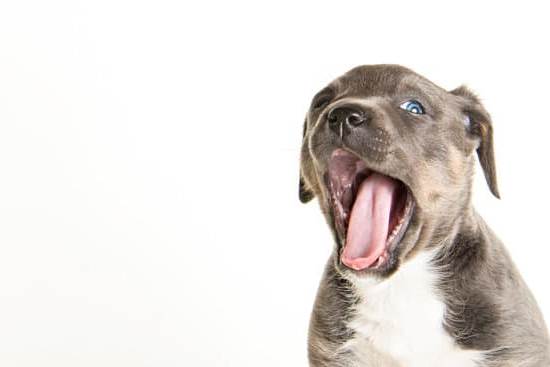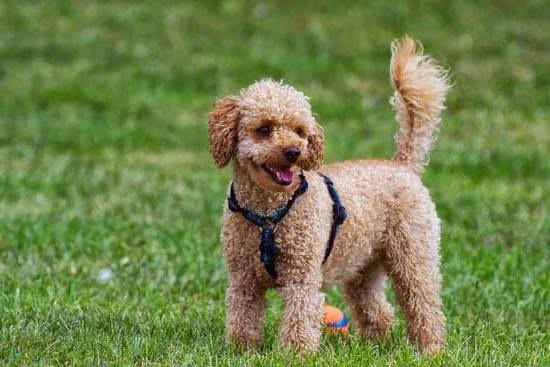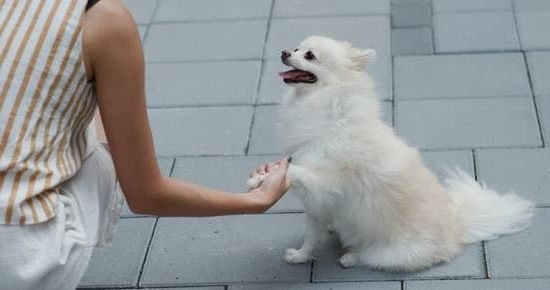Are you wondering, “Can little dogs be potty trained“? Potty training small dog breeds can certainly come with its own set of challenges, but with the right techniques and consistency, it is absolutely possible. From understanding the unique needs of little dogs to crate training and positive reinforcement, there are several effective methods that can help you successfully potty train your small canine companion.
Potty training little dogs requires a different approach compared to larger breeds. Small dog breeds have smaller bladders and higher metabolism, which means they need to relieve themselves more frequently. This can make the potty training process more challenging and require a greater level of patience and dedication from pet owners.
In this article, we will explore some tips for potty training small dog breeds, including the importance of crate training, consistency, and positive reinforcement. We’ll also discuss common mistakes to avoid when potty training little dogs and how to deal with setbacks in the process. By understanding the unique challenges and limitations of potty training for certain small dog breeds, pet owners can set realistic expectations and work towards successful potty training with patience and persistence.
Tips for Potty Training Small Dog Breeds
Potty training a small dog can present some unique challenges, but with the right approach and consistency, it is definitely possible. When it comes to potty training small dog breeds, there are a few key tips that can make the process easier and more effective.
Firstly, it’s important to establish a regular potty schedule for your small dog. This means taking them outside at the same times every day and offering plenty of opportunities for them to do their business. Small dogs have smaller bladders, so they may need more frequent bathroom breaks compared to larger breeds.
Another tip for potty training small dog breeds is to choose a designated potty area in your yard. By consistently bringing your little dog to the same spot, you can help them understand where they should go potty. This can also be helpful for indoor pee pads or litter box training if you live in an apartment or don’t have easy access to an outdoor area.
In addition to establishing a routine and designated potty area, positive reinforcement is essential when potty training small dogs. Offering treats and praise when they go potty in the right place can reinforce good behavior and encourage them to continue using that spot. With consistent training and positive reinforcement, even little dogs can be successfully potty trained.
| Tips | Data |
|---|---|
| Establish a regular potty schedule | Take small dogs outside at the same times every day |
| Designated potty area | Choose a specific spot for your little dog to go potty |
| Positive reinforcement | Offer treats and praise for going potty in the right place |
Crate Training
Choosing the Right Crate
When it comes to potty training small dogs, using a crate can be a game changer. The key to successful crate training is choosing the right size crate for your little dog. The crate should be big enough for your dog to comfortably stand up, turn around, and lie down, but not so large that they can use one end as a bathroom area.
Using the Crate Effectively
Once you have the right crate for your small dog, it’s important to introduce them to it gradually. Start by placing treats and toys inside the crate to encourage your dog to explore and associate it with positive experiences. Once they are comfortable going in and out of the crate on their own, you can start using it as a tool for potty training.
Creating a Routine
Consistency is essential when it comes to potty training small dogs using a crate. Establishing a routine for feeding, bathroom breaks, and time spent in the crate will help your little dog understand what is expected of them. Take your dog outside to their designated potty area first thing in the morning, after meals, before bedtime, and any time they show signs of needing to go.
Patience and Persistence
Potty training small dogs through crate training requires patience and persistence. It may take time for your little dog to fully grasp the concept of holding it until they are taken outside. Accidents will happen, but it’s important not to punish or scold your dog. Instead, focus on reinforcing good behavior and providing plenty of opportunities for success.
The Importance of Consistency in Potty Training Little Dogs
Potty training a little dog may seem like a daunting task, but with the right approach and consistency, it is definitely achievable. Consistency is key when it comes to potty training any dog, but it is especially crucial for small breeds.
Little dogs have smaller bladders, which means they need to go out more frequently than larger breeds. By establishing a consistent routine for bathroom breaks, you can help your little pup understand where and when they should be doing their business.
Consistency also applies to the designated potty area for your small dog. Whether it’s a specific spot in the yard or a pee pad indoors, always take your little dog to the same place to do their business. This helps them understand what is expected of them and reduces confusion. Additionally, using consistent verbal cues or commands while potty training can help reinforce the desired behavior in your little dog.
Another important aspect of consistency in potty training small dogs is maintaining a regular feeding schedule. By feeding your little pup at the same times each day, you can predict when they will need to go outside to eliminate. This also helps regulate their digestive system and makes potty training more manageable.
| Aspect of Consistency | Importance |
|---|---|
| Routine for bathroom breaks | Helps small dogs understand where and when to go potty |
| Designated potty area | Reduces confusion and reinforces expected behavior |
| Regular feeding schedule | Predictable bathroom times and regulates digestive system |
Common Mistakes to Avoid When Potty Training Small Dogs
When it comes to potty training small dogs, there are several common mistakes that pet owners should avoid in order to ensure successful training. One of the most common mistakes is not establishing a consistent routine for potty breaks. Small dogs have smaller bladders and therefore need to go more frequently, so setting a schedule for potty breaks is essential. Without a consistent routine, little dogs may have accidents indoors.
Another mistake to avoid is punishing the dog for accidents. Punishment can create fear and anxiety in your little dog, making it even more difficult to potty train them. Instead of punishment, focus on positive reinforcement when they do their business in the appropriate spot. This could be through treats, praise, or even playtime as a reward for good behavior.
Additionally, another mistake to steer clear of is not cleaning accidents properly. Dogs have a strong sense of smell and if an accident isn’t thoroughly cleaned, they may continue to use the same spot for elimination. Using an enzymatic cleaner can help eliminate odors and discourage repeat accidents in the same area.
By being aware of these common mistakes and taking steps to avoid them, pet owners can create a positive environment for potty training their little dogs. Patience and consistency are key, and with the right approach, small dogs absolutely can be successfully potty trained.
The Role of Positive Reinforcement in Potty Training Small Dogs
Potty training small dogs can be a challenging task, but with the right techniques and consistent efforts, it is definitely achievable. One of the most effective methods for potty training small dog breeds is positive reinforcement.
This involves rewarding your little dog for good behavior, such as using the designated potty area, and not punishing them for accidents. Positive reinforcement helps create a positive association with going to the bathroom in the right place and encourages your small dog to repeat this behavior.
Here are some examples of positive reinforcement techniques that can be used when potty training small dogs:
- Treats: When your small dog successfully goes to the bathroom in the designated area, immediately give them a small treat as a reward.
- Verbal praise: Use enthusiastic and encouraging phrases such as “Good job.” or “Well done.” when your little dog uses the potty area correctly.
- Petting and affection: Shower your small dog with love and attention after they have successfully gone to the bathroom where they are supposed to.
Consistency is key when it comes to positive reinforcement. Make sure to reward your little dog every time they go to the bathroom in the right place, which will reinforce this desirable behavior. It is important to note that positive reinforcement should be used in conjunction with other potty training techniques for best results.
Dealing With Setbacks in Potty Training Small Dogs
Identifying the Cause of Setbacks
When facing setbacks in potty training your little dog, it’s crucial to identify the root cause. Setbacks can occur due to various reasons such as changes in routine, stress, anxiety, or medical issues. By understanding the cause of the setback, you can address the issue more effectively and prevent it from happening again in the future.
Reinforcing Positive Behavior
To overcome setbacks in potty training, it’s important to reinforce positive behavior consistently. Offer praise and rewards when your little dog successfully goes potty in the designated area. This positive reinforcement will help them understand what behavior is expected from them, ultimately reducing setbacks and speeding up the potty training process.
Adjusting Your Training Approach
If you’re experiencing frequent setbacks in potty training your small dog, consider adjusting your training approach. This could include increasing supervision, providing more frequent opportunities for bathroom breaks, or seeking professional guidance from a dog trainer or behaviorist. Adapting your training methods can help address any underlying issues causing setbacks and lead to more successful potty training outcomes for your little dog.
Understanding the Limitations of Potty Training for Certain Small Dog Breeds
Potty training small dog breeds can often be a challenge, but it is important to understand that there are limitations to the process for certain breeds. Some small dog breeds may have physical or health issues that make potty training more difficult, such as bladder control problems or other medical conditions. Additionally, certain breeds may be more stubborn or independent, which can make them resistant to potty training efforts.
For example, brachycephalic breeds such as Pugs and Bulldogs can have difficulty controlling their bladder due to their unique facial structure. This can make it harder for them to hold their urine for extended periods of time, making consistent potty training more challenging. Similarly, toy breeds like Chihuahuas and Yorkshire Terriers are known for being willful and independent, which can also pose challenges in the potty training process.
It is crucial for pet owners to research and understand the specific traits and characteristics of their small dog breed in order to set realistic expectations for potty training. Understanding the limitations of certain breeds can help pet owners approach potty training with patience and a clear understanding of the potential challenges they may face.
By taking into account the unique needs of their little dogs, pet owners can tailor their potty training methods to best suit their breed’s individual capabilities and tendencies.
Conclusion
Potty training small dogs can be a challenging and frustrating process, but with the right approach and mindset, it is definitely possible. The key to success lies in patience and persistence. Small dog breeds may have their own unique difficulties when it comes to potty training, but by following the right tips and strategies, you can set your little pup up for success.
Crate training is often touted as the most effective method for potty training small dogs. By using a crate to create a consistent routine and environment for your dog, you can help them understand when and where they should go potty. Consistency is also crucial in this process – establishing a regular schedule for potty breaks and using consistent verbal cues can help reinforce good habits.
It’s important to remember that setbacks are inevitable in the potty training process, especially with small dogs. However, with positive reinforcement and perseverance, you can overcome these setbacks and continue making progress. Every dog is unique, so it’s important to tailor your approach to fit your little dog’s individual needs and quirks. With dedication and understanding, you can successfully potty train even the smallest of canine companions.
Frequently Asked Questions
Is It Harder to Potty Train Small Dogs?
Potty training small dogs can be more challenging due to their size and often stubborn nature. They may have smaller bladders and require more frequent trips outside, making accidents more likely.
How Do You Potty Train a Small Dog?
Potty training a small dog requires patience, consistency, and positive reinforcement. Establishing a routine for feeding, potty breaks, and bedtime can help them learn when and where to do their business. Crate training can also be helpful.
What Small Dog Is the Easiest to Potty Train?
Small breeds like the Maltese, Poodle, or Shih Tzu are often considered easier to potty train due to their intelligence and eagerness to please. These breeds are known for being trainable and responsive to positive reinforcement methods during potty training.

Welcome to the blog! I am a professional dog trainer and have been working with dogs for many years. In this blog, I will be discussing various topics related to dog training, including tips, tricks, and advice. I hope you find this information helpful and informative. Thanks for reading!





